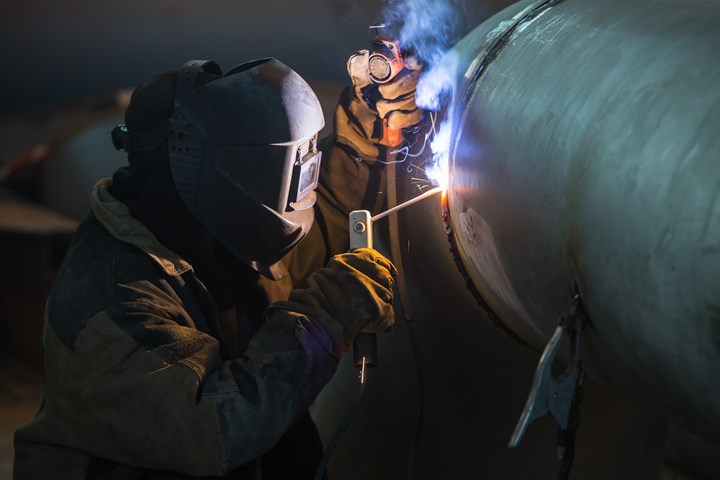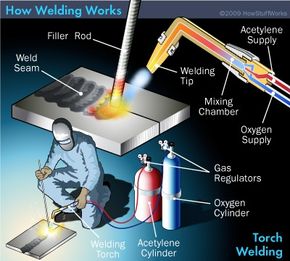The Ultimate Guide to Welding WPS Procedures: A Detailed Summary for Welders
In the elaborate globe of welding, Welding Treatment Specifications (WPS) act as the backbone of making sure top quality, consistency, and security in welding operations. Comprehending the subtleties of developing, implementing, and keeping track of WPS procedures is important for welders wanting to elevate their craft and fulfill market standards. As we delve right into the numerous components of a WPS and check out the ins and outs of credentials and qualification, we will discover the crucial function these procedures play in the realm of welding. Let's start a journey to unwind the complexities and relevance of WPS treatments in welding methods.
Relevance of WPS Procedures
Recognizing the relevance of Welding Treatment Specs (WPS) procedures is important for ensuring the quality and integrity of welded frameworks. WPS procedures act as a roadmap for welders, detailing the essential actions, criteria, and products required to attain a sound weld. By sticking to WPS guidelines, welders can make certain consistency in their job, leading to reliable and structurally sound welds.
One of the primary reasons why WPS procedures are essential is their function in keeping weld top quality and stability. Adhering to the specified welding parameters and methods described in the WPS helps protect against problems such as porosity, breaking, or incomplete combination, which can endanger the toughness and sturdiness of the weld.

Components of a WPS
A Welding Procedure Requirements (WPS) commonly makes up necessary parts that information the certain demands for carrying out a weld, making sure consistency and top quality in the welding procedure. The essential elements of a WPS include essential variables such as base metals, filler metals, interpass and preheat temperature levels, welding processes, securing gases, welding settings, and post-weld warm treatment demands.
Base metals refer to the materials being signed up with, while filler metals are made use of to fill the space between the base steels during welding. Preheat and interpass temperature levels are crucial for controlling the warmth input and avoiding concerns like fracturing or distortion. The welding process details the specific method to be utilized, whether it's gas metal arc welding (GMAW), protected metal arc welding (SMAW), or an additional approach. Protecting gases protect the weld swimming pool from climatic contamination. Welding positions specify the alignments in which welding can be done. Post-weld heat therapy may be needed to ease tensions and boost the weld's residential properties. A comprehensive understanding of these parts is essential for developing a effective and thorough WPS.

Certification and Certification
Having actually established the essential elements of a Welding Treatment Requirements (WPS), the emphasis currently moves in the direction of the crucial aspects of certification and accreditation in welding techniques.

Accreditation, on the click to read other hand, is the formal acknowledgment of a welder's qualifications by a pertinent certification body or company. Welding accreditations are typically based on the details welding processes, products, and settings a welder is certified to work with. Holding a valid welding certification shows that a welder meets market criteria and is proficient to execute welding tasks to the needed specs.
Producing a WPS
To create a Welding Treatment Requirements (WPS) that fulfills sector standards, careful factor to consider of welding processes, find this materials, and functional specifications is necessary. The initial action in producing a WPS is to recognize the welding procedure to be made use of, such as gas steel arc welding (GMAW) or protected steel arc welding (SMAW)

Applying and Checking WPS
Upon settling the thorough Welding Treatment Spec (WPS) that meticulously details welding procedures, materials, operational specifications, and quality control procedures, the emphasis changes to properly implementing and checking the recognized treatments. Execution entails making certain that all welders involved in the project know with the WPS and follow it meticulously during the welding procedure. This needs giving adequate training and supervision to guarantee adherence to the defined procedures. Checking the WPS includes constant oversight to verify that welding tasks line up with the recorded specs. Inspections, testing, and quality assurance steps are necessary parts of the tracking process to identify any variances or concerns quickly. Regular audits and evaluations of the welding procedures aid in preserving uniformity and top quality throughout the job. Effective execution and monitoring of the WPS are critical for making certain the integrity, stamina, and safety and security of the bonded joints, inevitably adding to the total success of the welding job.
Final Thought
To conclude, understanding and following Welding Treatment Specifications (WPS) is critical for welders to guarantee top quality, consistency, and safety and security in their work. By understanding the components of a WPS, getting appropriate qualifications and accreditations, developing detailed procedures, and carrying out and monitoring them efficiently, welders can boost their abilities and proficiency in welding techniques. Following WPS procedures is crucial for creating top notch welds and meeting sector criteria.
In the intricate world of welding, Welding Procedure Requirements (WPS) serve as the backbone of making sure high quality, uniformity, and safety in welding procedures. The welding process lays out the certain method to be made use of, whether it's gas steel arc welding (GMAW), shielded metal arc welding (SMAW), or an additional approach.To create a Welding Treatment Spec (WPS) that meets market criteria, mindful factor to consider of welding procedures, materials, and functional specifications is crucial. The initial action in creating a WPS is to recognize the welding procedure to be made use of, such as gas steel arc welding (GMAW) or secured metal arc welding (SMAW)Upon completing the detailed Welding Procedure Specification (WPS) that diligently information welding procedures, products, operational criteria, and quality assurance measures, the emphasis moves to efficiently carrying out and keeping an eye on the well established procedures.